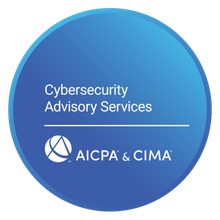Cybersecurity for Tax Professionals: IRS Compliance Basics
In the rapidly evolving landscape of digital finance, cybersecurity for tax professionals has become increasingly critical. As someone entrusted with handling sensitive financial and personal details, a tax preparer's role extends beyond mere compliance to being the first line of defense against escalating cyber threats. The vulnerability of client data to cyber attacks necessitates a proactive approach to implement robust safeguards and mitigate the risk of costly data breaches.
Navigating the complex web of cybersecurity compliance in the tax sector, characterized by stringent government regulations and ever-evolving standards, is a daunting yet essential task. Merely adopting basic security protocols is insufficient; a comprehensive strategy encompassing a deep understanding of industry-specific regulations, the implementation of cutting-edge security measures, and ongoing vigilance to adapt to new threats is imperative.
Familiarizing yourself with the core principles of cybersecurity in the realm of tax preparation is crucial to evade potential penalties and prevent data breaches. This entails a thorough comprehension of the diverse regulations set forth by governmental agencies and the adoption of effective security practices. Continuous monitoring and timely updates of these practices are key to staying a step ahead of potential cyber risks.
In today's digital domain, safeguarding client data transcends obligation and becomes an indispensable aspect of your professional duty. Mastery of IRS cybersecurity compliance is not just about adhering to legal standards; it's about ensuring the utmost security of client data against an array of cyber dangers. This article aims to empower tax professionals with the knowledge and tools necessary to uphold the highest standards of data security and compliance in an increasingly digitalized world.
IRS Compliance Basics
Exploring the cybersecurity responsibilities of tax professionals reveals a wealth of publicly available information. This can seem daunting, but it's actually quite straightforward when distilled to its essence. To simplify:
Compliance equates to the rigorous adherence to the laws and guidelines, as every tax professional agrees to in the W12 form during the PTIN application and renewal.
For reference, any individual with a preparer tax identification number agreed to this statement on the W12:
Let's delve deeper into what agreeing to the W12 form implies for individuals with a preparer tax identification number. This commitment translates into two fundamental aspects of compliance:
-
Developing and Sustaining a Data Security Plan: This involves a meticulous process where tax preparers need to identify potential risks to client data, devise effective safeguards, and set up protocols to manage any incidents.
-
Ensuring Robust System Security: This includes the implementation of critical security measures like firewalls, antivirus software, and secure authentication methods, each playing a pivotal role in safeguarding taxpayer information.
Navigating these complex requirements may appear challenging, but a wealth of resources is available to guide tax professionals through the intricacies of cyber security compliance. Understanding and adhering to these responsibilities is key not just for protecting clients' data, but also for maintaining legal compliance in the dynamic field of tax preparation.
IRS Requirements for a Data Security Plan
According to IRS regulations, a data security plan must be specifically designed for the size, scope, and complexity of your tax preparation activities. The sensitive nature of taxpayer data demands a customized approach. While the IRS publication 4557 Safeguarding Taxpayer Data offers a foundational framework, diving into additional resources is key to mastering cybersecurity in tax practices.
Essential readings for tax professionals include NISTIR 7621, FIPS 199, FIPS 200, and crucially, Special Publication 800-18 Revision 1 by the National Institute of Standards and Technology (NIST). These publications provide in-depth insights into securing client information and documenting security measures.
A data security plan should never be a generic template. Tailoring it to your business's unique characteristics is vital for effectiveness and compliance with federal guidelines. The NIST resources are invaluable for tax professionals to create a comprehensive, compliant security strategy.
Assistance in Creating a Data Security Plan
At the forefront of empowering tax professionals, we provide access to an extensive suite of tools and resources essential for crafting a state-of-the-art data security plan. This collection includes not only practical guides and whitepapers but also customizable templates like our exclusive IRS WISP template. Tailored to meet the diverse requirements of modern tax firms, our resources offer a robust foundation for cybersecurity. By utilizing these tools, tax professionals can enhance their security strategies, ensuring the utmost protection of sensitive client data, and positioning their firms as trusted, compliant leaders in the field of tax preparation.
A robust security plan typically encompasses:
• Detailed information about the company, including the types of data processed and stored;
• Clear guidelines on data access control;
• Comprehensive strategies for data protection; and
• Policies governing the use of company resources by employees, both during work and off-hours.
The effectiveness of a data security plan hinges on its dynamic nature. It requires regular review and updates, ensuring it remains relevant and efficient. A pivotal element is the Action Plan, an essential aspect of the incident response plan, detailing emergency protocols. This plan demands frequent evaluations and drills to guarantee its readiness and efficacy.
In any emergency situation, such as a data breach, fire, or theft, the importance of a well-structured Incident Response Plan cannot be overstated. This plan is vital for swiftly and effectively managing incidents, limiting potential data loss and unauthorized disclosure of client and tax information. A thorough, tested plan not only safeguards sensitive data but also reinforces to clients, regulatory authorities, and stakeholders the commitment of the tax preparer to robust data security practices.
During IRS investigations or security audits, having this plan readily accessible is crucial. It serves as a testament to your proactive measures in data protection, ready to be presented to clients or auditors upon request. Continual updates to the plan, reflecting changes in operations, systems, or emerging threats, are essential for maintaining its relevance and effectiveness.
Creating a comprehensive written information security plan is an extensive process, demanding ongoing refinement and attention. This overview touches on the basics; however, an effective plan is a dynamic document, needing regular updates as your business evolves, technologies advance, and new security challenges emerge. By remaining proactive and updating your plan regularly, you ensure the ongoing protection of your clients' sensitive information, thereby preserving the trust and integrity of your business.
Compliance Part 2/2: Proper System Safeguards
Implementing a robust data security plan is crucial for tax professionals, yet it's merely the initial phase in safeguarding sensitive client data. The next vital step involves deploying appropriate system safeguards to operationalize the plan effectively. Without these safeguards, the plan remains theoretical, potentially vulnerable to real-world cyber threats.
Tax professionals are encouraged to refer to IRS, FTC, and NIST guidelines for selecting security measures. While IRS Publication 4557 is a significant starting point, it's pivotal to delve deeper into NIST's resources like FIPS 199, FIPS 200, NISTIR 7621, and Special Publication 800-18 Revision 1 for a comprehensive defense strategy.
IRS Publication 4557 specifically targets tax preparers, emphasizing the need for robust safeguards in tax filing and client data protection. This guide aims to prevent data breaches and unauthorized access, offering a framework for effective data handling.
Key system safeguards encompass diverse strategies: encrypting sensitive data, securing data storage with restricted access, ensuring disaster recovery capabilities, and safeguarding against unauthorized disclosures. Additionally, tax preparers must vigilantly protect against malware on employee devices, necessitating strong antivirus solutions and timely security updates.
By integrating these measures, tax professionals can significantly reduce the risk of data breaches, upholding the security and confidentiality of their clients' financial information.
Security Six: IRS-Mandated Cybersecurity Fundamentals
The 'Security Six' comprises essential cybersecurity components devised by the IRS to guide tax professionals in protecting sensitive financial data. As outlined in Publication 4557, these measures represent the minimum required to defend against cyber threats. However, proactive tax preparers should consider implementing additional, advanced security protocols beyond the Security Six for enhanced protection as the security six is only a starting point:
1. Antivirus Software
2. Robust Firewalls
3. Two-factor Authentication
4. Comprehensive Data Backups
5. Drive Encryption Techniques
6. Secure Virtual Private Networks (VPN)
While these measures provide a solid foundation, it's imperative to tailor each security element to your specific business context. This involves considering your network setup, the nature of the data handled, company size, and potential risk factors. Customizing your cybersecurity approach ensures you meet and surpass compliance requirements, offering optimal protection for your clients' financial information.
Key Documents for IRS Cybersecurity Compliance
Understanding IRS cybersecurity compliance is pivotal for tax professionals. Publications like 5293 and 4524 offer crucial insights into safeguarding client data, forming the baseline for protective measures against cyber threats.
Publication 5293, 'Data Security for Tax Professionals,' outlines essential security recommendations. It emphasizes the importance of robust passwords and up-to-date software, serving as an introductory guide for newcomers in data security.
Additionally, Publication 4524, 'Security Recommendations for Tax Professionals,' extends guidance on securing both physical and digital data, including creating comprehensive backup and recovery plans.
However, these IRS resources are starting points. Each tax practice demands a customized cybersecurity approach, reflecting specific operational needs.
Moreover, IRS Publication 1075 presents detailed guidelines on safeguarding measures, useful for tax preparers. This publication's insights extend beyond federal and state agency use, offering valuable advice for the tax industry.
Key elements from Publication 1075 include conducting risk assessments, establishing stringent access controls, and devising incident response strategies.
For an extensive cybersecurity guide, NIST Special Publication 800-53 Revision 5 is an essential resource. It provides a comprehensive catalog of security controls, addressing a broad spectrum of threats and risks.
"This publication provides a catalog of security and privacy controls for information systems and organizations to protect against a diverse set of threats and risks, including hostile attacks, human errors, natural disasters, structural failures, foreign intelligence entities, and privacy risks."
This document is crucial for tax professionals, covering topics from emergency preparedness to advanced security measures like detonation chambers for isolating and testing potentially malicious code.
Implementing NIST's guidelines, especially in high-risk areas like malware prevention, is vital for tax preparers to protect client data and maintain a secure practice.
Proactive Steps for Cybersecurity Compliance in Tax Preparation
For tax professionals, safeguarding clients' sensitive data is not just a responsibility but a necessity. The IRS offers foundational guidance like Publication 4557, a crucial starting point for understanding cybersecurity compliance. While invaluable, this resource should be the beginning of your journey in digital security.
Beyond IRS guidelines, continuous learning and application of advanced cybersecurity practices are imperative. If unsure about compliance strategies or enhancing digital security, consulting with a security specialist is a proactive step. They can offer tailored advice to align your practices with federal regulations and safeguard client data effectively.
Ready to elevate your cybersecurity measures? Explore part one of our Security Six Series for in-depth insights into IRS-compliant cybersecurity strategies for your tax preparation business.






